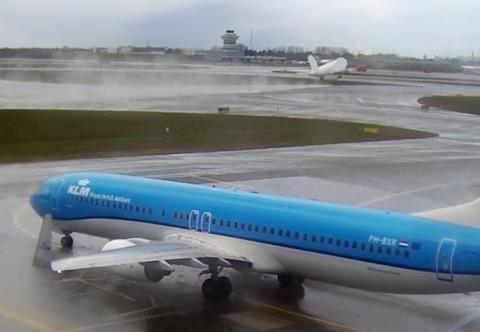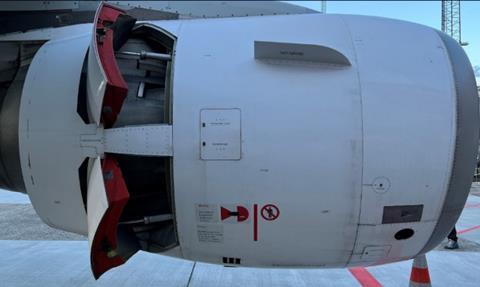Airbus is aiming to introduce an engine control unit software modification for CFM International CFM56 powerplants, to reduce the safety risk if A320 pilots attempt a go-around after activating reverse-thrust.
Standard procedures require crews to commit to a full-stop landing once reverse-thrust has been selected.
But analysis of flight data indicated that the level of adherence to procedures during reverser operation was “lower than expected” and represented “significant exposure”, says Danish accident investigation authority Havarikommissionen.
This analysis was conducted as part of a CFM56 reverser design review, following a serious incident in Copenhagen during which a TAP A320 aborted its landing despite the crew’s activating thrust reversers on touchdown.
The aircraft subsequently climbed away with asymmetric thrust after a software logic condition enabled the left-hand engine’s reverser doors to remain open while the right-hand engine’s doors were stowed.

Investigators discovered that the crew – having already selected reverse thrust – advanced the thrust levers to execute a go-around, just at the point when the left-hand main landing-gear bounced on touchdown.
This bounce removed the weight-on-wheels signal and, combined with the thrust lever advancement, interrupted the left engine’s reverser stowage.
While the crew regained control of the aircraft and landed safely, the April 2022 incident prompted Airbus to inform A320 operators of the event, and revise the type’s operating manual to increase crew awareness that a full-stop landing must be performed after reverser selection. It also advised against premature arming of reverse-thrust before touchdown.

The manufacturer examined 3.4 million flights from 31 operators, to assess the level of adherence to recommendations relating to A320 reverser use.
This analysis indicated a go-around after reverser selection occurred about once in 1 million flights across the A320 family and its different engine configurations.
This equated to a rate, across the in-service fleet, of one occurrence per month – although the Copenhagen incident was the first involving the failure of a reverser to stow during an aborted landing.
Havarikommissioneny has recommended that the CFM56 engine control unit software be modified, and states that Airbus has embarked on developing an update which it expects to be ready next year.


























